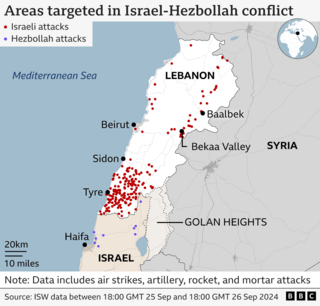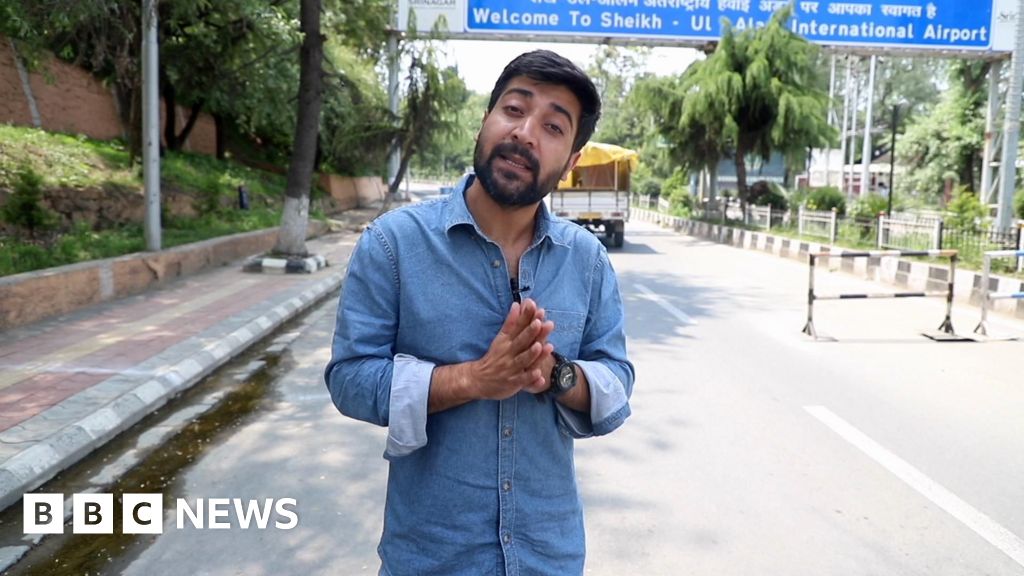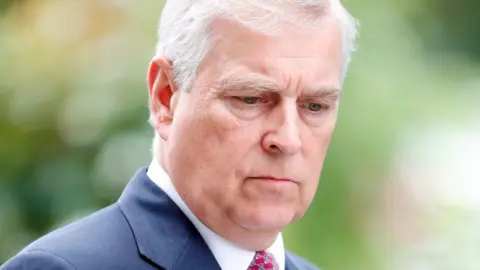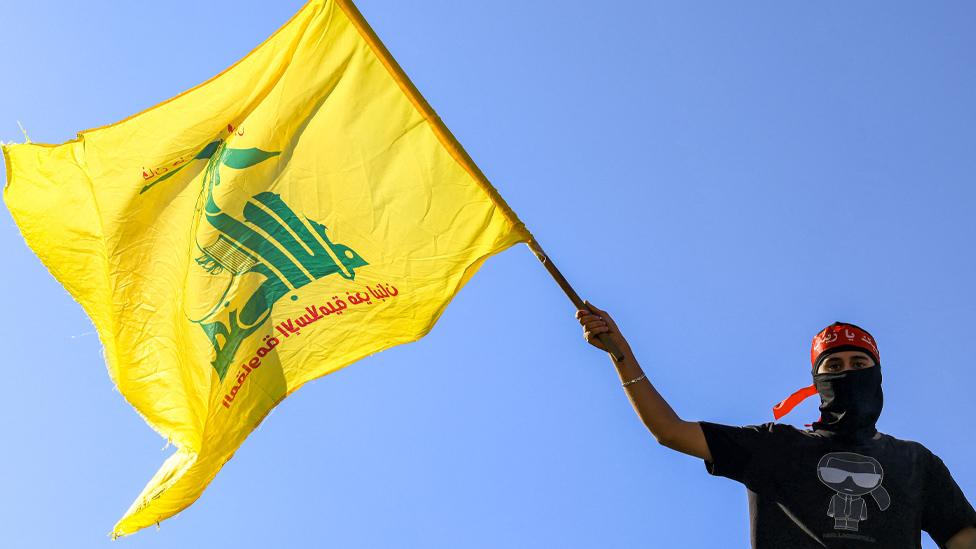
Israeli air strikes against the armed group Hezbollah have killed hundreds of people in Lebanon, in the deadliest escalation of cross-border attacks in decades.
Hezbollah has responded by firing hundreds of rockets into northern Israel, as fears grow that fighting sparked by the war in Gaza could lead to an all-out regional conflict.
What is Hezbollah and has it fought Israel before?
Hezbollah is an influential Shia Muslim political party and armed group.
It has a significant presence in both the Lebanese parliament and government, and controls the most powerful armed force in the country.
Hezbollah rose to prominence in the 1980s in opposition to Israel, whose forces had occupied southern Lebanon during the country’s 1975-1990 civil war.
It has received strong backing from Iran, both financially and militarily, for many years. It is also a strong ally of the Syrian president Bashar al-Assad.
Hezbollah’s armed wing has carried out deadly attacks on Israeli and US forces in Lebanon.
When Israeli troops withdrew from Lebanon in 2000, Hezbollah took credit for pushing them out and continues to oppose Israel’s presence in disputed border areas.
In 2006, a full-blown war broke out between Hezbollah and Israel, triggered by a deadly cross-border raid by Hezbollah.
Israeli troops invaded southern Lebanon to try to eliminate the threat from Hezbollah. About 1,000 civilians were killed during the conflict but Hezbollah claimed victory and has since increased its number of fighters and upgraded its weapons.
The group is designated as a terrorist organisation by Western states, Israel and Gulf Arab states.

How much political support does Hezbollah have?
Hezbollah has participated in Lebanon’s national elections since 1992 and has become a major political power.
The group and its allies lost their majority in parliament in the 2022 election, but a new government has not been formed since then and it continues to have ministers in the caretaker administration.
Lebanon is deeply divided over Hezbollah. While the group enjoys substantial popular support, many opponents accuse it of involvement in political corruption and oppose its military capabilities, viewing them as a significant factor in the country’s ongoing conflicts.
As a powerful political entity, Hezbollah also operates schools, hospitals, cultural institutions and charities across Lebanon.
How strong are Hezbollah’s forces?
Hezbollah has thousands of fighters and a huge missile arsenal in southern Lebanon.
It is one of the most heavily-armed, non-state military forces in the world. It is funded and equipped by Iran.
The organisation has claimed it has 100,000 fighters, although independent estimates put the number between 20,000 and 50,000.
Many are well-trained and battle-hardened, and have fought in the Syrian civil war.
Hezbollah has an estimated 120,000-200,000 rockets and missiles, according to the Center for Strategic and International Studies think tank.
Most of its arsenal is made up of small, unguided, surface-to-surface artillery rockets.
But it also thought to have anti-aircraft and anti-ship missiles, as well as guided missiles capable of striking deep inside Israel.
It has much more sophisticated weapons at its disposal than Hamas does in Gaza.
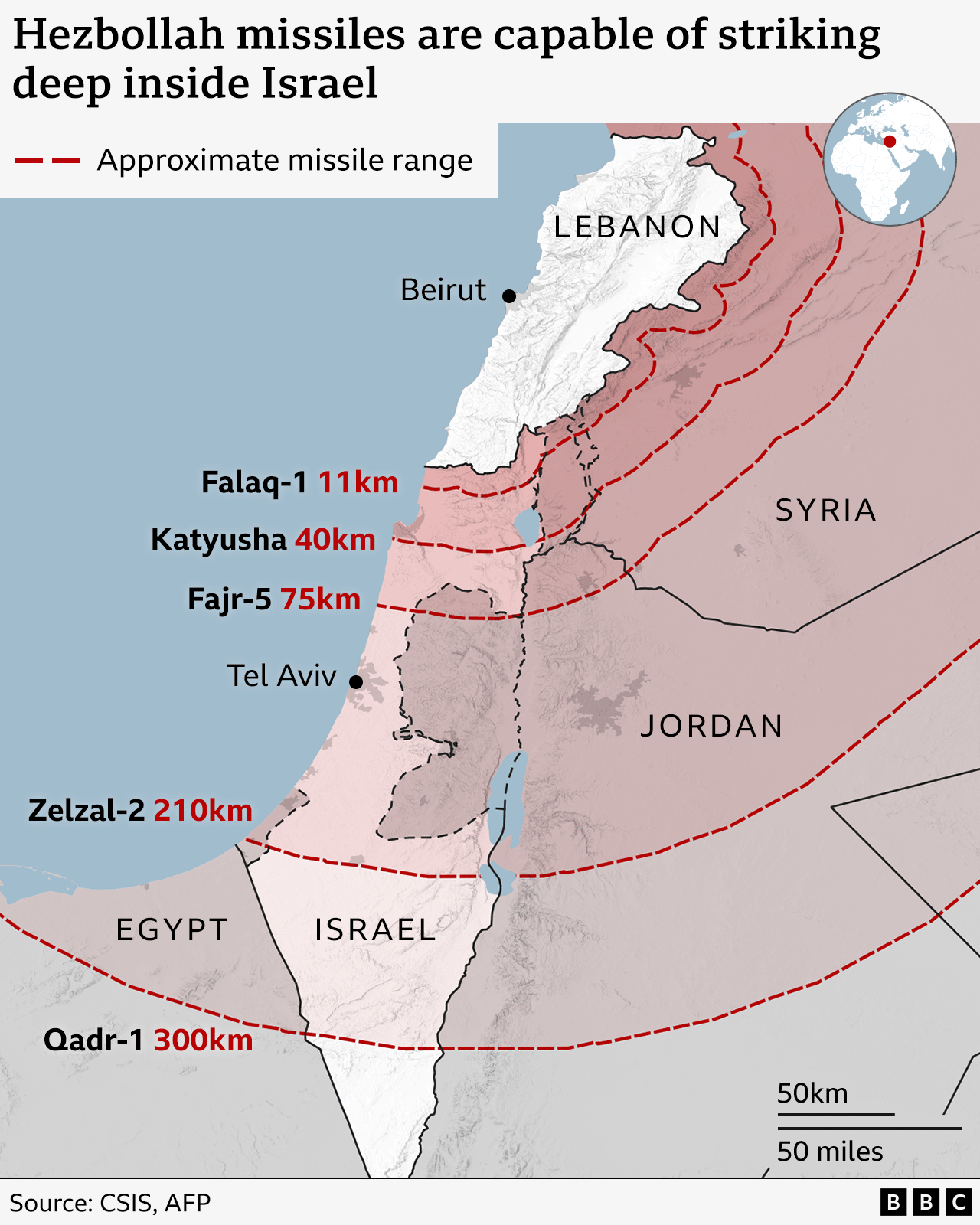
Hezbollah’s leader, Hassan Nasrallah
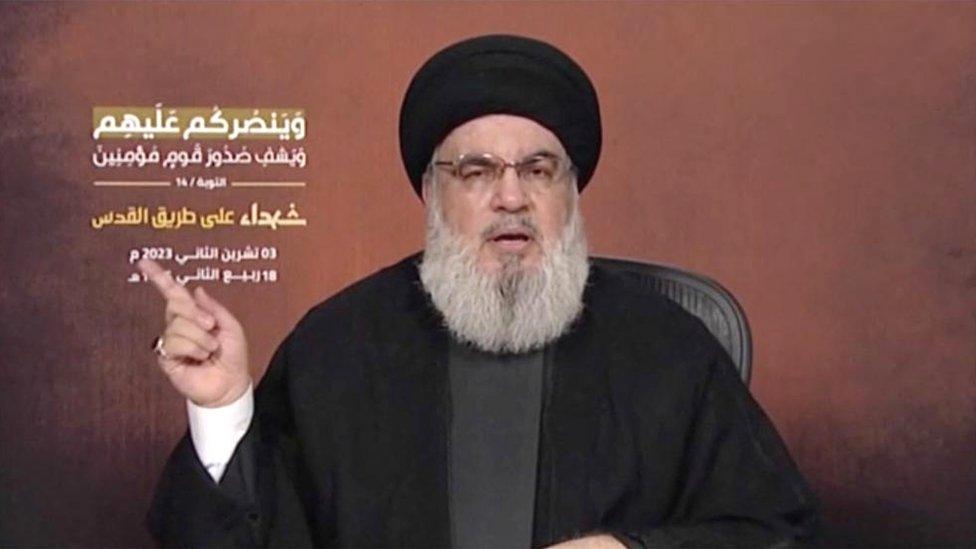
Hassan Nasrallah, a Shia cleric, has led Hezbollah since 1992.
On 28 September, Israel’s military said it had killed Nasrallah in an air strike on what it described as Hezbollah’s headquarters in Beirut, amid escalating fighting between it and Hezbollah.
Nasrallah played a key role in turning Hezbollah into a political – as a well as a military – force, and has close links with Iran and its Supreme Leader, Ayatollah Ali Khamenei.
The 64-year-old’s death was later confirmed by Hezbollah. It is unclear who will lead Hezbollah going forward.
How has the conflict between Hezbollah and Israel escalated?
Previously sporadic fighting escalated on 8 October 2023 – the day after the unprecedented attack on Israel by Hamas gunmen that triggered the war in Gaza.
Hezbollah fired at Israeli positions, in solidarity with the Palestinians.
The group has since launched more than 8,000 rockets at northern Israel and the Israeli-occupied Golan Heights. It has also fired anti-tank missiles at armoured vehicles and attacked military targets with explosive drones.
The Israel Defense Forces (IDF) has retaliated with air strikes and tank and artillery fire against Hezbollah positions in Lebanon.
More than 70,000 people have been displaced by the fighting in northern Israel, while more than 110,000 have been displaced on the Lebanese side of the border.
Tensions soared after the killing of 12 children and young people in a rocket attack in the Golan Heights on 27 July. Israel said Hezbollah carried out the attack, but the group denied involvement.
On 30 July, the IDF announced that it had killed senior Hezbollah military commander Fuad Shukr in an air strike in Beirut’s southern suburbs.
The following day, Hamas political leader Ismail Haniyeh was killed in Iran’s capital, Tehran. Israel neither confirmed nor denied any involvement.
On 25 August, the IDF said its jets had pre-emptively struck thousands of Hezbollah rocket launchers, after identifying that the group was preparing an attack in retaliation for the killing of Fuad Shukr.
Hezbollah said it still managed to launch hundreds of rockets and drones at Israel. However, it did not target major cities in Israel and did not deploy its more sophisticated weapons.
There was another significant escalation on 17 and 18 September, when 39 people were killed and thousands wounded after pagers and walkie-talkies used by members of Hezbollah exploded.
Hassan Nasrallah blamed Israel for the attacks and said they had “crossed all red lines”. Israel neither confirmed nor denied being behind the blasts.
Hezbollah suffered another setback on 20 September, when at least 16 members, including top military commanders Ibrahim Aqil and Ahmed Wahbi, were killed in an Israeli air strike in Beirut’s southern suburbs. Those killed also included children and other civilians.
Two days later, the group sought revenge for Aqil’s death by firing longer-range weapons deep inside Israel, sending thousands of Israelis to bomb shelters and damaging homes near the city of Haifa.
Lebanon’s health ministry said at least 613 people had been killed as of 20 September – before the IDF carried out hundreds of air strikes as part of a new “offensive operation”. Most of those killed since October were believed to be Hezbollah fighters, but at least 147 were civilians, according to the ministry.
In Israel, authorities say at least 49 people have been killed as a direct result of attacks.
Israel and Hezbollah have continued to trade strikes across the border in recent days, with Israel stepping up its attacks. Israeli Prime Minister Benjamin Netanyahu has said Israel’s goal was to “defeat Hezbollah” and return 70,000 displaced Israelis to their homes in the north.
Air strikes on Beirut on 27 September that killed Nasrallah also killed at least six people and injured 91.
Officials say nearly 800 have been killed and around 90,000 displaced since 23 September.
